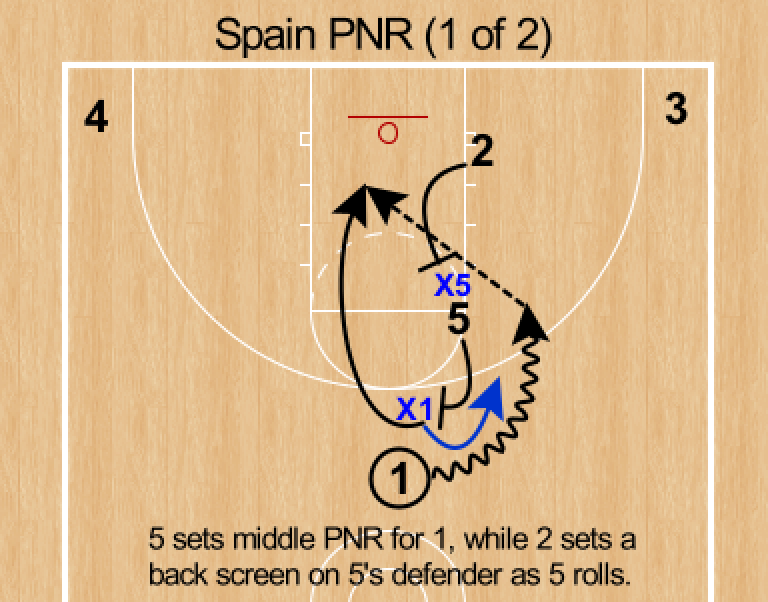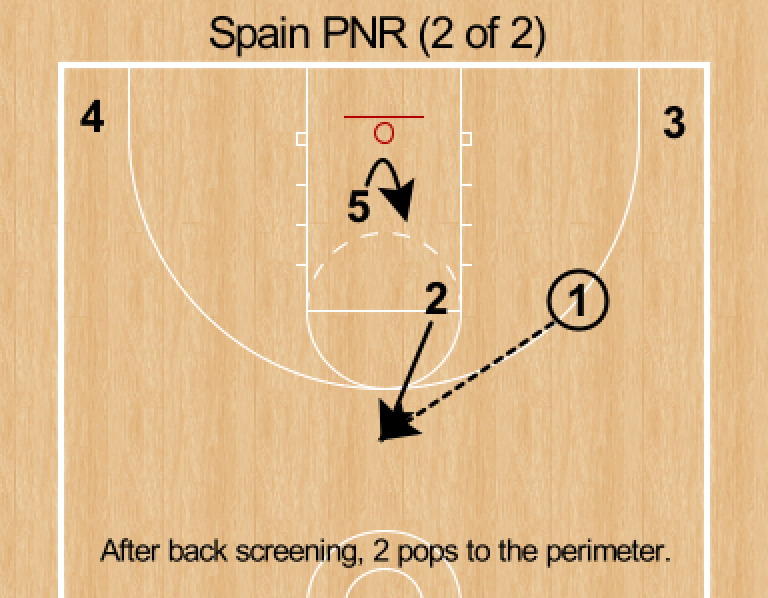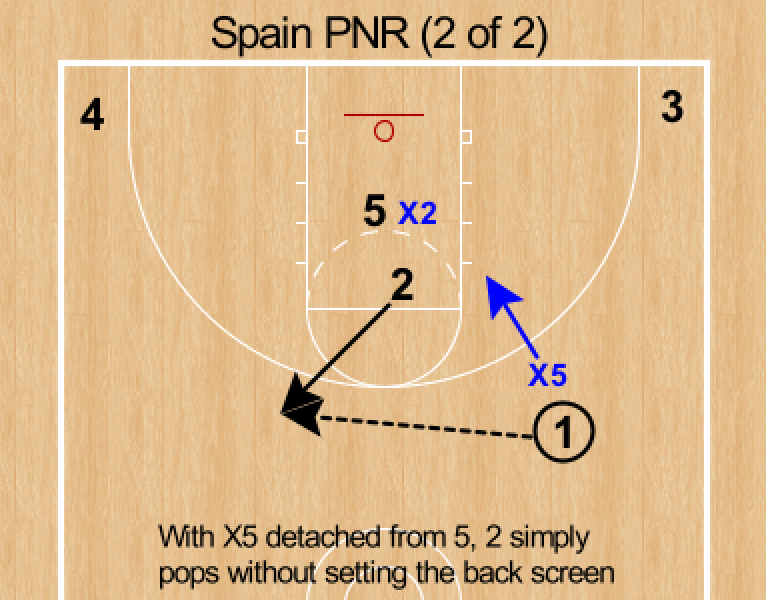Ball Screen Offense—Spain Pick and Roll Explained
WHat is a Spain Pick and Roll?
If you watched the Phoenix Suns throughout the 2021 NBA Playoffs you undoubtedly watched them run a European-influenced ball screen action known as “Spain pick and roll” with great success. But what exactly is Spain pick and roll and how is it different than a typical ball screen?
Spain pick and roll is a ball screen set in the middle of the floor, while a guard is simultaneously setting a back screen on the ball screener’s defender before popping to the top of the key. The action has proven extremely difficult to guard and an effective set for offenses, which is why we are seeing it spike in popularity over the last few seasons.
The action itself is credited to Sergio Scariolo, head coach of the Spanish national team, hence the name. Scariolo used the action heavily throughout the 2016 Olympic Games, and since then the Spain pick and roll has made its way into the NBA and is now filtering down throughout the college and high school levels.
spain Pick and Roll Basics:
Spain pick and roll is most easily understood when broken down into three parts—the screener, the shooter and the ball handler.
The screener, usually a big, will look to set a middle ball screen for the ball handler. As this is happening, the shooter will head hunt the screener’s defender and look to set a back screen as the screener rolls to the rim. The shooter will then pop to the perimeter looking for a catch and shoot opportunity. The ball handler will come off the initial middle ball screen with three potential scoring options—he can attack the rim or pull up off the dribble, hit the screener as he rolls to the rim or hit the shooter as he pops to the perimeter.
The two players not involved in the Spain pick and roll are more often than not located in the corners to keep proper middle ball screen spacing.
SPain Pick and Roll Reads:
The shooter does not always have to set the ball screen, especially if the screener’s defender is detached from the screener. For example, if the screener’s defender hard hedges the initial ball screen and slides himself out of the action, the shooter can simply sprint to space rather than setting the back screen first.
This works because with X5 hard hedging the initial ball screen, the shooter’s defender (X2 in the example below) is forced to tag or help on 5 rolling to the rim. By skipping the back screen and simply sprinting to space along the perimeter, the shooter forces his defender (X2) to make a decision—either help on the roll or stay with the shooter.
If X2 decides to tag or help on the screener rolling to the rim, which he is more than likely coached to do, then the shooter (2) will be wide open as he pops. If X2 decides to stay with the shooter, he risks leaving 5 open as he rolls to the rim, since 5’s defender will have to recover back after hard hedging the ball screen.
The general rule of thumb for the shooter/back screener is if the screener’s defender becomes detached from the screener, just pop to the top of the key and forget the back screen.
spain pIck and Roll Sets & Atos:
With Spain pick and roll becoming more and more popular, defenses are coming up with coverages to neutralize the action. To combat this, teams have become very clever in masking the Spain pick and roll action with false motion, dummy actions, etc. Check out some of our favorite sets in which teams mask the Spain pick and roll action to catch the defense off guard.




